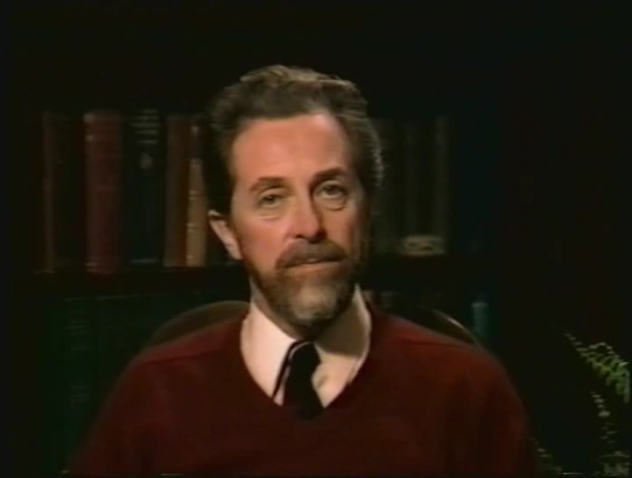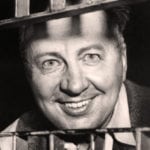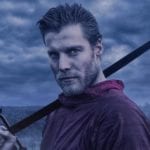 Weird Stuff
Weird Stuff  Weird Stuff
Weird Stuff  Our World
Our World 10 Ways Your Christmas Tree Is More Lit Than You Think
 Movies and TV
Movies and TV The 10 Coolest Stars to Set Sail on The Love Boat
 History
History 10 Things You Didn’t Know About the American National Anthem
 Technology
Technology Top 10 Everyday Tech Buzzwords That Hide a Darker Past
 Humans
Humans 10 Everyday Human Behaviors That Are Actually Survival Instincts
 Animals
Animals 10 Animals That Humiliated and Harmed Historical Leaders
 History
History 10 Most Influential Protests in Modern History
 Creepy
Creepy 10 More Representations of Death from Myth, Legend, and Folktale
 Technology
Technology 10 Scientific Breakthroughs of 2025 That’ll Change Everything
 Weird Stuff
Weird Stuff Ten Bizarre Facts About The Doge Meme
 Our World
Our World 10 Ways Your Christmas Tree Is More Lit Than You Think
 Movies and TV
Movies and TV The 10 Coolest Stars to Set Sail on The Love Boat
Who's Behind Listverse?

Jamie Frater
Head Editor
Jamie founded Listverse due to an insatiable desire to share fascinating, obscure, and bizarre facts. He has been a guest speaker on numerous national radio and television stations and is a five time published author.
More About Us History
History 10 Things You Didn’t Know About the American National Anthem
 Technology
Technology Top 10 Everyday Tech Buzzwords That Hide a Darker Past
 Humans
Humans 10 Everyday Human Behaviors That Are Actually Survival Instincts
 Animals
Animals 10 Animals That Humiliated and Harmed Historical Leaders
 History
History 10 Most Influential Protests in Modern History
 Creepy
Creepy 10 More Representations of Death from Myth, Legend, and Folktale
 Technology
Technology 10 Scientific Breakthroughs of 2025 That’ll Change Everything
10 Notorious Witches And Warlocks
Many individuals have risen to notable power and fame thanks to their supposed knowledge of magic and the arcane arts. Some of them became rich and famous because of their talent, others suffered violent deaths. The people on this list came from all social classes and every period of history. Their temperaments ranged from friendly to terrifying. Yet they all had one thing in common—the world remembers them as witches and warlocks.
10 Moll Dyer

Moll Dyer was a 17th-century woman who lived in St. Mary’s County, Maryland. Many things about her are shrouded in mystery, but she was know to be a strange woman. An herbal healer and outcast who survived mostly through the generosity of others, she was eventually accused of witchcraft and burned out of her hut during a freezing-cold night. She fled into the woods and was not seen for several days . . . until a local boy found her body. Moll Dyer was frozen to a large rock, in a kneeling position, with one hand raised to curse the men who had attacked her. Her knees had left permanent impressions on the stone. The villagers quickly found out they had been harassing the wrong woman (or, since they had accused her of witchcraft, the right woman). Moll Dyer’s curse fell upon the area for centuries, causing cold winters and epidemics.
Her ghost, often accompanied by various strange spectral animals, has been seen many times and is still said to haunt the area. Her eerie reputation eventually served as inspiration for the movie The Blair Witch Project. Although Moll Dyer is an influential folk figure in American witchcraft, reliable historical evidence of her existence is scarce.
9 Laurie Cabot

Laurie Cabot has been one of the instrumental forces in popularizing witchcraft in the United States. A California girl with a storied history as a dancer, her keen interest in the magical arts led her to New England. After years of studying the craft, she set up shop in Salem, Massachusetts, a historical epicenter of witch hunts. Initially she was wary of declaring herself as a witch. But when her familiar—a black cat—was stuck up a tree for days and the fire brigade refused to rescue it, she was forced to say she needed the cat in her rituals. The year was 1970 and the word “witch” still carried weight in Salem. The cat was immediately rescued by extremely meek and polite firemen.
Now officially out of the broom closet, Cabot became a national celebrity. She set up a coven and a witchcraft shop, both of which were instant hits. The shop, which has since moved online, became a tourist destination. Cabot rapidly became one of the most high-profile witches in the world. Even the local government got in on the action—the governor of Massachusetts, Michael Dukakis, declared her the official “Witch of Salem” thanks to her influence and good work in the community.
Cabot maintains that any curse by a witch will come back to haunt her and never performs evil magic. According to her, witchcraft is magic, astrology, and environmentalism combined in a scientific manner. She is the author of many books and a major influence on the Wiccan religion, which partially formed around her beliefs and approach to witchcraft. Although she is hailed as the High Priestess of Wicca, she says she does not actually practice the religion . . . because she was already doing it long before Gerald Gardner introduced Wicca to the world.
8 George Pickingill

George Pickingill sounds as though he walked straight out of a horror story. A tall, frightening 19th-century man with a hostile demeanor and long, sharp fingernails, he was a famous cunning man—a practitioner of folk magic. Old George, as he was commonly known, was a farm worker who claimed to be a hereditary witch. According to him, his magical ancestry could be traced all the way back to the 11th century and the witch Julia Pickingill, who was a sort of magical assistant to a local lord.
Pickingill was a vile, unlikeable man who often terrorized the other villagers for money and beer. However, he was respected as well as feared. He was said to be a skilled healer and occasionally settled disputes between villagers.
In occult circles, Pickingill was a superstar—essentially the Aleister Crowley of his time. He was recognized as an acolyte of an ancient horned god, a frequent ally of Satanists, and the foremost authority on magical arts. As such, his counsel was widely sought by other witches. However, this authority was somewhat spoiled by the fact that Pickingill was a bit of a bigot (he would only endorse a coven if its members could prove they were of pure witch lineage) and something of a sexist (all the work in his covens was done by women, who also had to submit to some fairly unsavory practices).
7 Angela de la Barthe

Angela de la Barthe was a noblewoman and a notorious witch who lived in the 13th century. She was burned at the stake for a number of atrocious deeds she’d committed, according to the Inquisition. Her many crimes included, but were not limited to, nightly sexual relations with an incubus, giving birth to a wolf-snake demon that was blamed for the disappearances of children in the area, and generally being an unpleasant person.
In reality, of course, Angela was nothing but an eccentric or perhaps mentally ill woman whose only crime was supporting Gnostic Christianism, a religious sect frowned upon by the Catholic Church. Her uncommon behavior led to accusations of witchcraft, which in turn led to a horrifying death. In those times, such a fate was all too common.
6 Abramelin The Mage

The true identity of the 15th-century man known as Abramelin the Mage has been lost to history. However, his legacy lives on in the form of thousands of followers and imitators. Abramelin was a powerful warlock described by Abraham of Würzburg, a magical scholar who convinced Abramelin to teach him his secrets.
Abraham produced painstaking manuscripts of Abramelin’s magical system, which was a complex process of commanding good and evil spirits to do his bidding. The system was based on magical symbols that could only activated at certain times and using certain rituals. In 1900, the manuscript was printed as a book called The Book of the Sacred Magic of Abramelin. It was an instant hit in the occult community, and acted as a direct influence on many notorious practitioners, including big-name players such as Aleister Crowley.
5 Alice Kyteler

For a long time, Ireland was more relaxed about witchcraft than mainland Europe. However, witch hunts eventually arrived there, too. One of the first and most notorious victims of these changing attitudes was Dame Alice Kyteler, a wealthy moneylender whose husbands had a nasty habit of dying and leaving everything to her. When husband No. 4 started to feel sickly and his fingernails began to drop off, his children smelled a rat—especially when they found out he was just about to sign a will that would leave everything to Kyteler.
In 1324, church officials put Dame Alice on trial for heading a secret society of heretical sorcerers. She was not only the first witch to be accused on Irish soil, but also the first who had been directly accused of relations with an incubus. Authorities attempted to charge and imprison her multiple times. However, Dame Alice had many allies and always managed to escape.
Kyteler eventually disappeared, leaving her servant and her son to be charged in her stead. She is said to have fled to England, where she lived in luxury for the rest of her days. Whether she actually dabbled in the dark arts or not, she is remembered to this day as the first witch in Ireland.
4 Tamsin Blight

A famous figure in 19th-century Cornwall, England, Tamsin Blight was an esteemed healer and hedge witch. Hedge witches were named for the hedges that surrounded villages, which acted as a symbol for the boundary between this world and others.
Blight was said to be especially good at removing spells and curses, and also a crafty healer. She could enter a trance-like state and tell the future. However, she had an arsenal of bad juju too, and her reputation was somewhat tarnished by her husband, a fellow magician called James Thomas. Although a respected conjurer, Thomas was a drunken bully and widely disliked for his antics. Tamsin eventually parted ways with him, but they got back together toward the end of her life.
Tamsin Blight’s curses were effective, in practice because of her reputation and the esteem in which she was held. Once she cursed a cobbler who wouldn’t mend her shoes—she hadn’t been paying her bills—and said he’d soon be out of a job. When word got out, no one did business with the man anymore, and he was eventually forced to leave the area.
3 Eliphas Levi

Alphonse Louis Constant was known better under the name Eliphas Levi Zahed, which he claimed was his birth name translated into Hebrew. He was the man largely responsible for the mystical arts as they are known today. During the 19th century, Eliphas Levi distilled a number of belief systems—from Christianity and Judaism to fringe beliefs such as Tarot and the writings of historical alchemists—into a strange hybrid that became known as “Occultism.”
A trained theologist who almost became a priest, Levi was always more of a scholar than a practicing magician. Still, he was extremely charismatic and had vast knowledge in many areas of magic. He authored many books of ritual magic.
Levi was particularly known for his work with Baphomet, the gargoyle-like entity allegedly worshipped by Knights Templar. He considered this figure a representation of “the absolute.” He drew the famous picture of Baphomet as a winged, goat-headed female figure—often the first picture anyone thinks of when the occult is mentioned.
2 Raymond Buckland

Raymond Buckland, “The Father of American Wicca,” was deeply impressed by modern Gardnerian Wicca. He took Gerald Gardner’s teachings to the New World and eventually refined them into his own variation called Seax-Wicca.
A veteran of witchcraft, Buckland has been involved in covens since the ’60s, usually as a leader. He is a Wiccan priest and a revered expert in all things neo-pagan. Until his retirement from active witchcraft in 1992, he spent decades as the most recognizable spokesman and the foremost expert of the craft. These days, he lives in rural Ohio, where he writes books about magic and continues to practice a solitary version of the craft.
1 Agnes Waterhouse

Agnes Waterhouse, commonly known as Mother Waterhouse, was one of the most famous witches England has ever known. The crimes she was accused of were pretty heinous—Mother Waterhouse and two other witches stood trial for dallying with the devil, cursing people, and even causing bodily harm and multiple deaths through their black magic. The strange thing about the case was that the Church had nothing to do with accusing Agnes. She was the first English witch sentenced to death by a secular court.
In her testimony, Agnes freely admitted to practicing the dark arts and devil worship. She owned a cat she called Satan, which she claimed to have sent to kill her enemies’ livestock and, on occasion, the enemies themselves. She was unrepentant, stating that Satan had told her she would die by hanging or burning and there was not a lot she could do about it.
Mother Waterhouse was indeed sentenced to hang for her crimes, despite the fact that the two other witches facing similar charges were let off lightly (one was found not guilty, the other sentenced to a year in prison—although later charges led to her death). Her Satanic bravado didn’t last for long after sentencing. On her way to the gallows, Waterhouse made one last confession—she had once failed to kill a man because his strong belief in God had prevented Satan from touching him. She went to her death praying for God’s forgiveness.
Pauli Poisuo also writes for Cracked.com. You can follow him on Twitter or contact him here.








